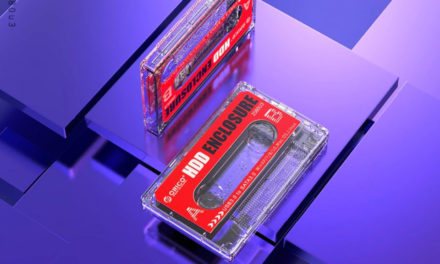
We have a NAS on the network
This box with a strange name certainly knows a lot more than we might think at first. The glossy little gadget that comes in a simple package includes an in-person FTP server, bittorrent client and print server.
After unpacking the box, we summarized its contents. The basic condition for operation is the 230 V power adapter together with the power cable, and the LAN cable must not be missing from the network unit either. An external hard drive can practically not exist without a USB 2.0 interface, so the cable needed for such a connection is not missing from the package either. The more inexperienced user may encounter difficulties in commissioning without outside help, and the user manual, which is more than satisfactory in detail, but in English only, will help to avoid this. We get the necessary software support on the mini CD, and the screws with a gift screwdriver are included with the installation, and then the stand that allows the device to be used standing up closes the line.
The exterior of the device is basically pleasing, the basic tone of which is given by the brushed aluminum frame. The fan grille is flashy, but maybe a simple dark grid would have been better instead. The front panel, after removing the protective foil, gives a nice mirror surface, which prefers to collect the fingerprints found in the family.
On the front panel just mentioned, there are LEDs indicating the presence of the power supply and the operation of the hard disk on the lower panel, and on the top there is a display on which you can see the current value of the internal temperature and the fan speed. Below the display are three buttons. With the first you can select whether you want to see the temperature value in Fahrenheit or Celsius, and with the other two buttons you can set a critical temperature value where the device alerts us.
The back cover, which houses the interfaces, is much more exciting. In addition to the power connector and the main switch, we have the option to turn the fan on and off, and if necessary, we can restart the device using the reset button. The connection is monitored there by the RJ-45 connector and two USB, which are responsible for data communication and the connection of external devices. The latter includes the USB1-EXIT button, which allows you to remove the foreign device properly. The remaining area is filled with ventilation holes.
To install, you need to pull the inner compartment out of the outer frame, then insert and secure the hard drive. The location of the 8 cm fan (AFS110) is advantageous, as it sucks the heated air exactly from the bottom of the HDD, the electronics. After attaching the HDD, put the frame back in the case and the fun can begin!
Properties:
- Ethernet and USB 2.0 interface
- Support for 3,5 ″ SATA hard drives
- FTP and DHCP support
- Network printer support
- Bittorrent client
- Samba server support on local network
- Compatible with DSL routers and modems
- Password management for hard drive access and web management
- Hardware restart function using the reset button
- USB port for connecting external devices such as external hard disk, Udisk, HUB
specifications:
| Model number: | NSB3AS |
| I attach: | Ethernet, USB 2.0 |
| Transmission speeds: | Ethernet: 100 Mb / s; USB: 480 Mbps |
| Device usage: | 3,5 ″ SATA hard drive |
| Device recognition: | Hot-plug and Plug-play support |
| Power supply: | Adapter (AC 100 ~ 240 V, 50 ~ 60 Hz; DC 5 V / 12 V) |
| Material: | Brushed aluminum |
| Cooling: | Active (fan below) |
| OS support: | Windows 98se / Me / 2000 / XP / Vista / 7; MAC OS 8.6 or later |
| Sizes: | 196 × 150 × 88 mm (L x W x D) |
| Crowd: | 1,25 kg |



















